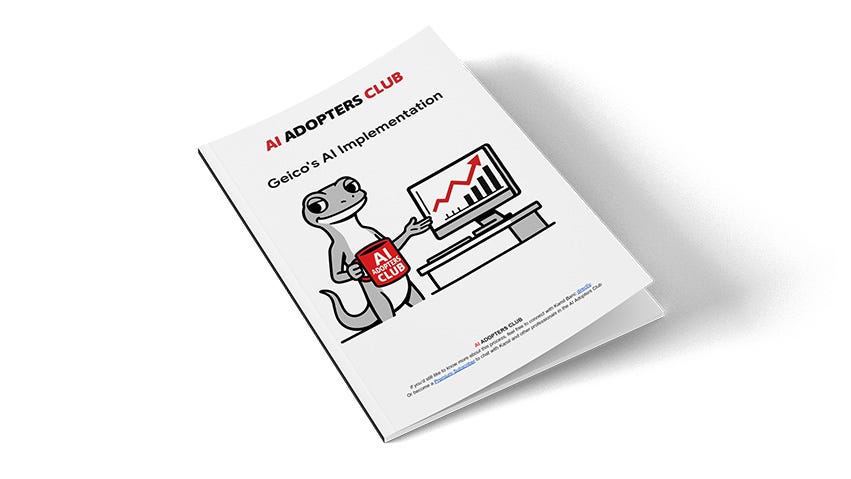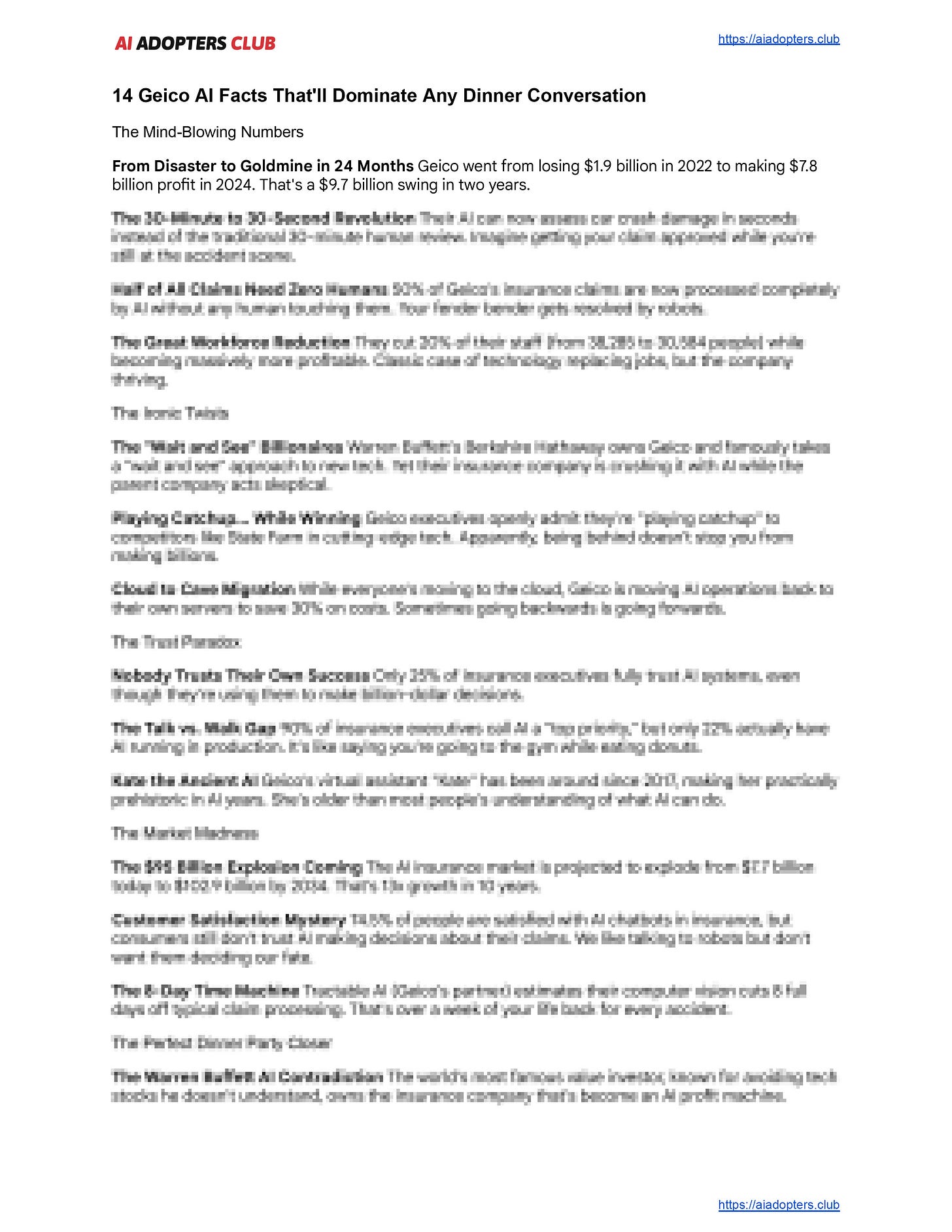How GEICO Turned AI Into a $7.8 Billion Profit Machine
While 90% of insurers talk strategy, only 22% actually deploy AI
Hey Adopter,
Most insurance executives treat AI like a vision board exercise. Lots of PowerPoint presentations about "digital transformation." Endless committee meetings about "AI strategy." Very little actual implementation.
Then there's Geico.
While competitors debated whether AI was ready for prime time, Geico quietly deployed it across claims, fraud detection, and underwriting. The result? A $7.8 billion underwriting profit in 2024, up from a $1.9 billion loss just two years earlier.
Here's how they did it without the corporate theater.
The Quiet Revolution in Auto Insurance
Geico's approach to AI reveals something most businesses miss completely. They didn't chase the latest shiny object or try to reinvent their entire operation overnight.
Instead, they identified three specific pain points where AI could deliver immediate, measurable value. Customer service wait times. Claims processing delays. Fraud detection accuracy.
Their AI virtual assistant now handles routine policy questions, freeing human agents for complex issues. Computer vision AI reduces vehicle damage assessment from weeks to hours. Cross-carrier fraud detection flags suspicious claims before they become expensive mistakes.
The contrast with industry peers is stark. While 90% of insurance executives call AI a "top strategic initiative," only 22% have AI solutions running in production. That execution gap represents the difference between talking about innovation and actually implementing it.
Want the complete analysis of Geico's AI implementation?
The full 47-page case study breaks down their exact vendor partnerships, governance frameworks, regulatory compliance strategies, and step-by-step implementation roadmap that mid-market firms can adapt for their own AI initiatives.
Also included: 14 Geico AI Facts That'll Dominate Any Dinner Conversation





